 The prisons in the United States aren’t any resort, but they are much better than other countries. I bet prisons were really back in B.C. times. Of course, if you were a political prisoner like Paul you have more privileges, just like now.
The prisons in the United States aren’t any resort, but they are much better than other countries. I bet prisons were really back in B.C. times. Of course, if you were a political prisoner like Paul you have more privileges, just like now.
But in Paul’s first prison stay in Rome, raunchy and nasty as it was, he could at least have visitors and tell the Good News of Jesus, but he had to pay for his room and board. That would be like getting a room at the Motel 6 now days, wonder if they left the lights on.
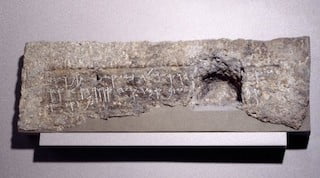
“This is [the tomb of Shebna]yahu who is over the house. There is no silver and gold here, only [his bones] and the bones of his maidservant with him. Cursed be the man who opens this.” (The wording in brackets is missing on the inscription and has been supplied.)
Shebna was “treasurer over the house” (meaning comptroller or governor of the palace) in the reign of king Hezekiah of Judah, according to the Hebrew Bible. Because of his pride he was ejected from his office, and replaced by Eliakim the son of Hilkiah as recorded in Book of Isaiah (Isaiah 22:15–25). Shebna also appears to have been the leader of the party who favored an alliance with Egypt against Assyria.
Shebna may have been the same “Shebna the scribe” who was sent by Hezekiah to confer with the Assyrian ambassador recorded in the Books of King.
A royal steward’s rock-cut tomb discovered in Siloam is believed to be his, although only the last three letters of the name remain legible on the lintel from the tomb that is now kept in the British Museum. The assumption is that Shebna’s name may have also been pronounced ‘Shevanyahu’, which fits the inscription perfectly.And You know, nothing has changed in regard to criminals. It doesn’t matter if you are guilty or not, if you don’t have cash and the authorities think you’re guilty the guards treat you like a dog, just like they did with Paul.
1 And it came to pass, when king Hezekiah heard it, that he rent his clothes, and covered himself with sackcloth, and went into the house of the LORD.
“House of the LORD” – designated as a place of prayer by Solomon (see Kgs 8:33). The Assyrian references to Hezekiah’s dependence on the Lord (36:7, 15, 18) were true.
2 And he sent Eliakim, who was over the household, and Shebna the scribe, and the elders of the priests covered with sackcloth, unto Isaiah the prophet the son of Amoz.
3 And they said unto him, Thus saith Hezekiah, This day is a day of trouble, and of rebuke, and of blasphemy: for the children are come to the birth, and there is not strength to bring forth.
“Come to the birth” – the child is at the opening of the womb but cannot be born, an even more vivid description than that of the pains of childbirth (see 13:8 and note).
4 It may be the LORD thy God will hear the words of Rabshakeh, whom the king of Assyria his master hath sent to reproach the living God, and will reprove the words which the LORD thy God hath heard: wherefore lift up thy prayer for the remnant that is left.
“Remnant” – Jerusalem was left almost alone.
5 So the servants of king Hezekiah came to Isaiah.
6 And Isaiah said unto them, Thus shall ye say unto your master, Thus saith the LORD, Be not afraid of the words that thou hast heard, wherewith the servants of the king of Assyria have blasphemed me.
7 Behold, I will send a blast upon him, and he shall hear a rumor, and return to his own land; and I will cause him to fall by the sword in his own land.
“Blast” – perhaps a compulsion or a disposition.
8 So Rabshakeh returned, and found the king of Assyria warring against Libnah: for he had heard that he was departed from Lachish.
9 And he heard say concerning Tirhakah king of Ethiopia, He is come forth to make war with thee. And when he heard it, he sent messengers to Hezekiah, saying,
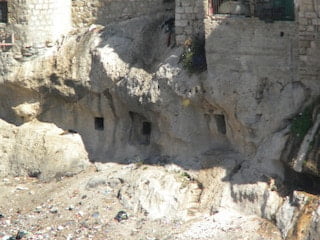
The Biblical prophet Isaiah served in the kingdom of Judah during the reign of King Uzziah, Jotham, Ahaz and most famously, Hezekiah. Isaiah had messages of judgement to deliver to the inhabitants of Jerusalem and Judah, the kingdom of Israel and the surrounding nations. On occasion, Isaiah’s messages were directed to specific individuals. For example:
“This is what the Sovereign Lord, Jehovah of armies, says: “Go in to this steward, to Shebna, who is in charge of the house, and say, ‘What is your interest here, and who is there of interest to you here, that you hewed out a burial place here for yourself?’ He is hewing out his burial place in a high place; he is cutting out a resting-place for himself in a crag.” (Isaiah 22:15, 16)
So who was Shebna and how did he earn this rebuke? Shebna was “in charge of the house“, that is, he was evidently in charge of the palace of Hezekiah. So he had a very prominent position in the kingdom, second only to the king. Yet, rather than pay attention to his duties to the king and the kingdom, he pursued selfish interests. He built a prominent tomb, a tomb fit for a royal, “in a high place“, highly visible to others.
Where was this tomb? The approximate area of the tomb is well known. Only the kings of Judah were buried within the walls of Jerusalem (specifically in the City of David). Everyone else was buried outside of the city. Across the Kidron Valley on the slopes of the Mount of Olives, directly across from the old City of David, generations of aristocratic families carved their burial caves. It seems that aristocrats like Shebna wanted to have their tombs as near as possible to the burial places of the kings.
“Tirhakah king of Ethiopia” – in 701 B.C. he was actually a prince (the brother of the new pharaoh Shebitku, who sent him with an army to help Hezekiah withstand the Assyrian invasion); he did not become king until 690 B.C. but this part of Isaiah was not written before 681, so it was natural to speak of Tirhakah as king.
10 Thus shall ye speak to Hezekiah king of Judah, saying, Let not thy God, in whom thou trustest, deceive thee, saying, Jerusalem shall not be given into the hand of the king of Assyria.
“God…deceive” – the message of vv. 10-13 is similar to that of 36:18-20.
11 Behold, thou hast heard what the kings of Assyria have done to all lands by destroying them utterly; and shalt thou be delivered?
12 Have the gods of the nations delivered them which my fathers have destroyed, as Gozan, and Haran, and Rezeph, and the children of Eden which were in Telassar?
“Gozan” – a city in northern Mesopotamia to which some of the Israelites had been deported by the Assyrians.
“Haran” – city west of Gozan where Abraham lived for a number of years.
“Rezeph” – a city between Haran and the Euphrates River.
“Eden” the state of Bit Adini, located between the Euphrates and Balikh rivers.
13 Where is the king of Hamath, and the king of Arphad, and the king of the city of Sepharvaim, Hena, and Ivah?
14 And Hezekiah received the letter from the hand of the messengers, and read it: and Hezekiah went up unto the house of the LORD, and spread it before the LORD.
“Spread it before” – contrast the hypocritical spreading out of hands to pray in 1:15.
15 And Hezekiah prayed unto the LORD, saying,
16 O LORD of hosts, God of Israel, that dwellest between the cherubims, thou art the God, even thou alone, of all the kingdoms of the earth: thou hast made heaven and earth.
17 Incline thine ear, O LORD, and hear; open thine eyes, O LORD, and see: and hear all the words of Sennacherib, which hath sent to reproach the living God.
18 Of a truth, LORD, the kings of Assyria have laid waste all the nations, and their countries,
19 And have cast their gods into the fire: for they were no gods, but the work of men’s hands, wood and stone: therefore they have destroyed them.
20 Now therefore, O LORD our God, save us from his hand, that all the kingdoms of the earth may know that thou art the LORD, even thou only.
21 Then Isaiah the son of Amoz sent unto Hezekiah, saying, Thus saith the LORD God of Israel, Whereas thou hast prayed to me against Sennacherib king of Assyria:
22 This is the word which the LORD hath spoken concerning him; The virgin, the daughter of Zion, hath despised thee, and laughed thee to scorn; the daughter of Jerusalem hath shaken her head at thee.
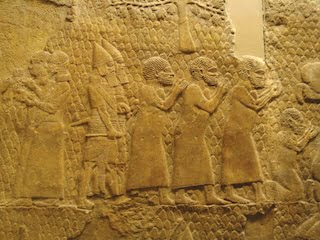
On the Lachish reliefs in the British Museum, Israelite prisoners are shown being sent into exile by the Assyrians under Sennacherib. This relief formerly adorned a wall in Sennacherib’s palace in ancient Ninevah.
The prisoners playing lyres. Three musicians — possibly Judaean prisoners — are marched under escort through a mountainous country. Their dress indicate that they came from somewhere to the west of Assyria, possibly Phoenicia. The scene recalls the biblical lament (Psalm 137) referring to a later period: “…They that carried us away captives required us a song.”
Assyrian, about 700-692 BCE. From Room XLVII, the southwest palace, Nineveh (modern-day Mosul Governorate, Iraq), Mesopotamia. The British Museum, London. Photo © Osama S. M. Amin.
“Virgin, the daughter of Zion” – a personification of Jerusalem and its inhabitants.
“Shaken her head” – a gesture of mocking.
23 Whom hast thou reproached and blasphemed? And against whom hast thou exalted thy voice, and lifted up thine eyes on high? Even against the Holy One of Israel.
“Lift up…on high” – Assyria’s great pride had been condemned earlier.
“Holy One of Israel” – a designation of the God of Israel characteristic of Isaiah.
24 By thy servants hast thou reproached the Lord, and hast said, By the multitude of my chariots am I come up to the height of the mountains, to the sides of Lebanon; and I will cut down the tall cedars thereof, and the choice fir trees thereof: and I will enter into the height of his border, and the forest of his Carmel.
”Come up To the height” – cf. the words of the king of Babylon in 14:13-14.
“Cut down…cedars” – for many centuries the kings of Mesopotamia had used the cedars of Lebanon in their royal buildings.
“Height of his border” – the highest peak of mount Lebanon, a rather bold claim in that chariots were primarily effective for fighting on level ground.
25 I have digged, and drunk water; and with the sole of my feet have I dried up all the rivers of the besieged places.
“Digged” – the digging of wells; even desert lands could not stop him.
“Dried up the rivers” – the branches of the Nile were no obstacle either. This boast was almost a claim to deity.
26 Hast thou not heard long ago, how I have done it; and of ancient times, that I have formed it? Now have I brought it to pass, that thou shouldest be to lay waste defensed cities into ruinous heaps.
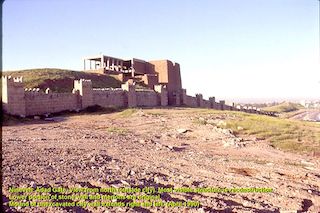
The ancient city of Nineveh is situated just outside Mosul on the east bank of the River Tigris. Nobody knows exactly when it was inhabited for the first time, but it was a cultural settlement in the 6th millennium BC, right through Sumerian and Babylonian periods. In fact, the name of Nineveh is of Sumerian origin.
Nineveh was the 3rd capital of Assyria Empire after Assur and Nimrud, dating from the reign of the great King Sennacherib (704-681 BC) and was one of the most powerful cities of the Middle East: the hub of the civilized ancient World. Its downfall came in 612 BC, when it was sacked by the Medes of Northern Persia whom killed the last great king of Nineveh, Ashurbanipal, 669-624 B.C.
“Defensed cities into ruinous heaps” – Assyria had been God’s tool of judgment against the nations (see 10:5-6).
27 Therefore their inhabitants were of small power, they were dismayed and confounded: they were as the grass of the field, and as the green herb, as the grass on the housetops, and as corn blasted before it be grown up.
“Grass on the housetops” – roofs in the Near East were flat.
28 But I know thy abode, and thy going out, and thy coming in, and thy rage against me.
29 Because thy rage against me, and thy tumult, is come up into mine ears, therefore will I put my hook in thy nose, and my bridle in thy lips, and I will turn thee back by the way by which thou camest.
“Hook in thy nose” – the Assyrians often led away captives by tying ropes to rings placed in their noses.
30 And this shall be a sign unto thee, Ye shall eat this year such as groweth of itself; and the second year that which springeth of the same: and in the third year sow ye, and reap, and plant vineyards, and eat the fruit thereof.
“Second…third year” – probably the second year was to begin shortly, so the total time was less than 36 months. Another three-year sign was given in 20:3.
“Plant vineyards, and eat” – the response to Assyria’s proposal in 36:16.
31 And the remnant that is escaped of the house of Judah shall again take root downward, and bear fruit upward:
32 For out of Jerusalem shall go forth a remnant, and they that escape out of mount Zion: the zeal of the LORD of hosts shall do this.
33 Therefore thus saith the LORD concerning the king of Assyria, He shall not come into this city, nor shoot an arrow there, nor come before it with shields, nor cast a bank against it.
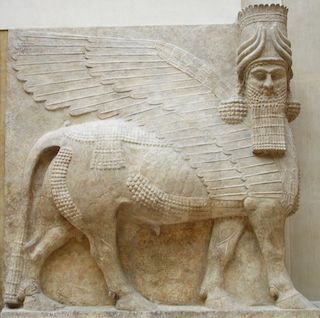
From the ninth to the seventh century B.C., the kings of Assyria ruled over a vast empire centered in northern Iraq. The great Assyrian king Ashurnasirpal II (r. 883–859 B.C.), undertook a vast building program at Nimrud, ancient Kalhu. Until it became the capital city under Ashurnasirpal, Nimrud had been no more than a provincial town.
The new capital occupied an area of about nine hundred acres, around which Ashurnasirpal constructed a mudbrick wall that was 120 feet thick, 42 feet high, and five miles long. In the southwest corner of this enclosure was the acropolis, where the temples, palaces, and administrative offices of the empire were located.
In 879 B.C. Ashurnasirpal held a festival for 69,574 people to celebrate the construction of the new capital, and the event was documented by an inscription that read: “the happy people of all the lands together with the people of Kalhu—for ten days I feasted, wined, bathed, and honored them and sent them back to their home in peace and joy.”
The so-called Standard Inscription that ran across the surface of most of the reliefs described Ashurnasirpal’s palace:
“I built thereon [a palace with] halls of cedar, cypress, juniper, boxwood, teak, terebinth, and tamarisk [?] as my royal dwelling and for the enduring leisure life of my lordship.”
The inscription continues:
“Beasts of the mountains and the seas, which I had fashioned out of white limestone and alabaster, I had set up in its gates. I made it [the palace] fittingly imposing.”
Among such stone beasts is the human-headed, winged bull pictured here. The horned cap attests to its divinity, and the belt signifies its power. The sculptor gave these guardian figures five legs so that they appear to be standing firmly when viewed from the front but striding forward when seen from the side. Lamassu protected and supported important doorways in Assyrian palaces“Cast a bank” – to put up a siege ramp that would help the invaders bring up battering rams and scale the walls.
34 By the way that he came, by the same shall he return, and shall not come into this city, saith the LORD.
35 For I will defend this city to save it for mine own sake, and for my servant David’s sake.
“David’s sake” – God had promised David an enduring throne in Jerusalem.
36 Then the angel of the LORD went forth, and smote in the camp of the Assyrians a hundred and fourscore and five thousand: and when they arose early in the morning, behold, they were all dead corpses.
“Angel of the LORD…smote” – cf. the striking down on the firstborn in Egypt (Ex 12:12) and the angel’s sword poised against Jerusalem (2 Sam 24:16). The Greek historian Herodotus attributed this destruction to a bubonic plague. In the biblical account, the death of these soldiers is by divine intervention and fulfills the prophecies of 10:33-34; 30:31, 31;8. This does not mean Herodotus is incorrect, it’s quite possible that it was the angel that put the bubonic plague on the soldiers, he killed them somehow.
37 So Sennacherib king of Assyria departed, and went and returned, and dwelt at Nineveh.
“Nineveh” – the capital of Assyria.
38 And it came to pass, as he was worshiping in the house of Nisroch his god, that Adrammelech and Sharezer his sons smote him with the sword; and they escaped into the land of Armenia: and Esar-haddon his son reigned in his stead.
“In the house” – Hezekiah had gone to the Lord’s temple and gained strength (vv. 1, 14). Twenty years later, 681 B.C., Sennacherib went to the temple of his god and was killed.
“Armenia” – Urartu, north of Assyria in Armenia.
So the Pharaoh of Egypt helped King Hezekiah out, but how did the Pharaoh know that the king needed help? I mean, it’s not like they had cell phones or anything like that. Did he pray to You and then You relayed the message or how did something get information out to someone else, especially when you are in deep trouble?
Ancient Prisons
Old Testament Imprisonment as a legal punishment is not a feature of ancient law codes. The Mosaic law allowed for a place of custody until the case was decided (Lev 24:12; Num 15:34), but beginning only in the Persian period does the Bible mention incarceration as a penalty for breaking the religious law (Ezra 7:26).
Prisons mentioned in the Old Testament were under the control of the crown. Joseph was put in a royal prison in Egypt (Gen 39:20 ), apparently attached to the house of the captain of the guard (Gen 40:3 ).
Asa of Judah (2 Chr 16:10 ) and Ahab of Israel (1 Kgs 22:26-27 ) made use of prisons, probably associated with the palace. The experience of Jeremiah, however, provides the most interesting glimpses of prisons and prison life.
The royal prisons were apparently not large, as the one in which Jeremiah was initially placed was a converted private house (Jer 37:15 ). He was confined to an underground dungeon (Jer 37:16 ), perhaps a converted cistern.
Jeremiah later was placed under house arrest in the “court of the guard” (Jer 37:20-21). There, he was available for consultation with the king (Jer 38:14, 28 ), able to conduct business (Jer 32:2-3, 6-12 ), and able to speak freely (Jer 38:1-4 ).
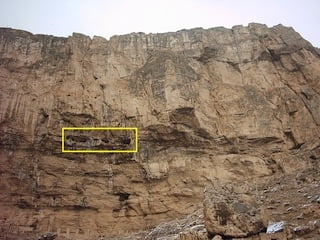
The holes in the yellow line are ancient prisons!The prisonors were fed by a rope.No one could ever escape.they were used about 200 years ago for the last time.
Because the latter enraged the princes, Jeremiah was confined for a time to a muddy cistern in the “court of the guard” (Jer 38:4-13 ).
Persons were confined in royal prisons for offending the king (Gen 40:1-3 ), perhaps by political intrigue. In Israel, prophets were jailed for denouncing royal policy (2 Chr 16:10), predicting ill of the king (1 Kgs 22:26-27), and suspected collaboration with the enemy (Jer 37:11-15).
Political prisoners in Assyrian and Babylonian prisons included former kings of rebellious nations (2 Kgs 17:4, 24:15, 25:27; Jer 52:11). Samson became a prisoner in a Philistine prison (Jdg 16:21 ). Prisoners of war were usually either killed or enslaved.
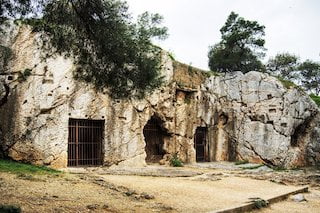
The place who the great Greek philosopher died after he drank hemlock at 399 B.C.
The lot of prisoners was pitiable, sometimes consisting of meager rations (1 Kgs 22:27) and hard labor (Jdg 16:21). In some cases, prisoners were restrained and tortured by the stocks or collar (2 Chr 16:10; Jer 29:26).
Jehoiachin was clothed in special prison garments in Babylon (2 Kgs 25:29 ). Prison life became a symbol of oppression and suffering (Ps 79:11 ), and release from prison provided a picture of restoration or salvation (Ps 102:20, 142:7, 146:7; Isa 61:1; Zech 9:11-12 ).
In New Testament times, persons could be imprisoned for nonpayment of debt (Matt 5:25-26; Lk 12:58-59), political insurrection and criminal acts (Lk 23:19, 25), as well as for certain religious practices (Lk 21:12 ; Acts 8:3 ).
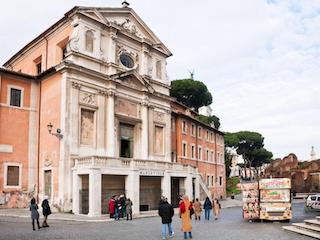
According with the legendary tradition that Saints Peter and Paul were imprisoned there. It is possible that Paul could have been imprisoned here before he was executed at Aquas Salvias, and Peter before his execution in Nero’s circus on the Vatican Hill.
There are plaques on which names of the martyrs are listed. There is also an altar with the busts of the Apostles Peter & Paul who were incarcerated. It was decorated with an upside-down cross because St. Peter was crucified upside-down there in 64 A.D.
Some of the famous people who died in that prison are Jugurthe King of Mauritania, Simon Bar Jioras, Vercingeyotix, the leader of the Gauls.
It was built originally as a cistern around 500 B.C. It was then believed to have a healing property and used to baptize prisoners & guards in the prison.
Twelve feet underground, there was a lower secret room of the jail. It was known as Tullianum, named after Servius Tullius who was the builder of it. It is said that executed. Executions were made either by strangulation or starving to death.
For some of these offenses, public prisons were also employed (Acts 5:18-19 ). John the Baptist was arrested for criticizing the king (Lk 3:19-20 ) and seems to have been held in a royal prison attached to the palace (Mk 6:17-29).
Later, Peter was held under heavy security, consisting of chains, multiple guards, and iron doors (Acts 12:5-11 ).
Paul, who imprisoned others (Acts 8:3, 22:4, 26:10), before he experienced Jesus (Acts 9) was often in prison himself (2 Cor 11:23 ). His experiences provides the most detail on prisons in the New Testament world.
In Philippi, he and Silas were placed under the charge of a lone jailer (Acts 16:23-24). Excavations at Philippi have uncovered a crypt revered by early Christians as the prison and adorned with frescos depicting Paul and Silas in Philippi.
If the identification is correct, the crypt’s small size eliminates any doubt that when Paul and Silas sang hymns the prisoners were listening to them (Acts 16:25). Perhaps the crypt, originally a cistern, served only as the innermost cell (Acts 16:24) for maximum security or solitary confinement.
In Jerusalem, Paul was held in the barracks of the Roman cohort (Acts 23:16-18). After his transfer to Caesarea, he was confined with some freedom in the headquarters of Roman procurators and was allowed to receive visitors (Acts 23:35, 24:23).
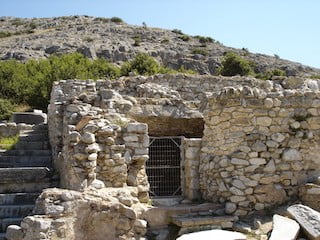
Paul bore the scars of the flogging which he received at Philippi.
As he and other prisoners were transferred to Rome by ship, Paul was again given some freedom (Acts 27:1, 3), but when shipwreck became imminent, the soldiers resolved to kill them all lest they should escape (Acts 27:42-43).
While awaiting trial in Rome, Paul remained under constant guard in a kind of house arrest (Acts 28:16-17, 28:30), met his own expenses, and was free to receive visitors and preach the gospel openly and unhindered (Acts 28:30).
Paul considered his imprisonment as for Christ (Eph 3:1, 4:1; Phil 1:1, 9, 13-14).
The situation for prisoners remained dismal in New Testament times, and concern for such persons is a virtue expected by Christ of every disciple (Matt 25:36, 39, 43-44). It is Satan who will be imprisoned during the millennium (Rev 20:1-3, 7).
Visits: 0
